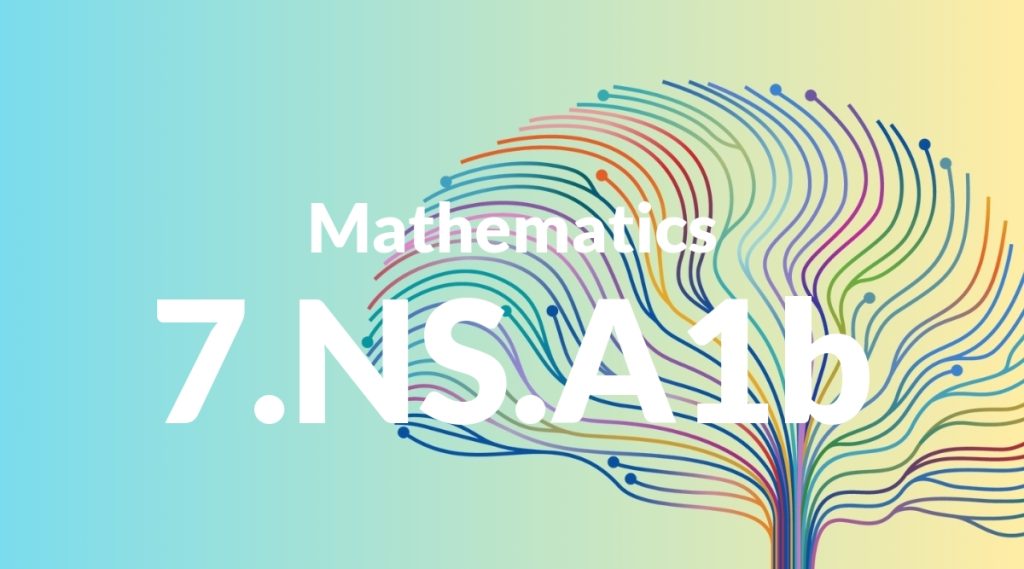Standard: 7.NS.A1b – Understand p + q as the number located a distance |q| from p, in the positive or negative direction depending on whether q is positive or negative. Show that a number and its opposite have a sum of 0 (are additive inverses). Interpret sums of rational numbers by describing real-world contexts.
Grade level: Grade 7
Subject: Mathematics
Domain: The Number System
Teacher Overview
This standard helps students understand how to add rational numbers by visualizing their positions on a number line. It emphasizes the concept of additive inverses and their real-world applications, which is crucial for developing algebraic thinking. Students should be comfortable with identifying and working with positive and negative numbers, understanding absolute value, and performing basic arithmetic operations.
After mastering this standard, students will be prepared to tackle more complex algebraic concepts and real-world problem-solving involving rational numbers.
Common Misconception 1
Some students may believe that adding a number to its opposite does not result in zero. This misunderstanding can stem from a lack of familiarity with the concept of additive inverses.
Intervention 1
Use number lines and manipulatives to visually demonstrate that a number and its opposite always sum to zero.
Common Misconception 2
Another common misconception is that students may incorrectly move in the wrong direction on the number line when adding negative numbers.
Intervention 2
Provide extensive practice with number lines and contextual problems to help students internalize the correct direction of movement.
Prerequisite Knowledge
Students should have a basic understanding of positive and negative numbers, absolute value, and simple addition and subtraction of integers.
Subsequent Knowledge
Students will develop skills in solving more complex equations involving rational numbers and will apply these skills in algebra and real-world problem-solving contexts.
Instructional Activities
- Use number lines to demonstrate adding positive and negative numbers.
- Create real-world scenarios like temperature changes or financial transactions for students to solve.
- Interactive games that involve balancing equations with positive and negative numbers.
- Group activities where students explain their reasoning for adding rational numbers.




